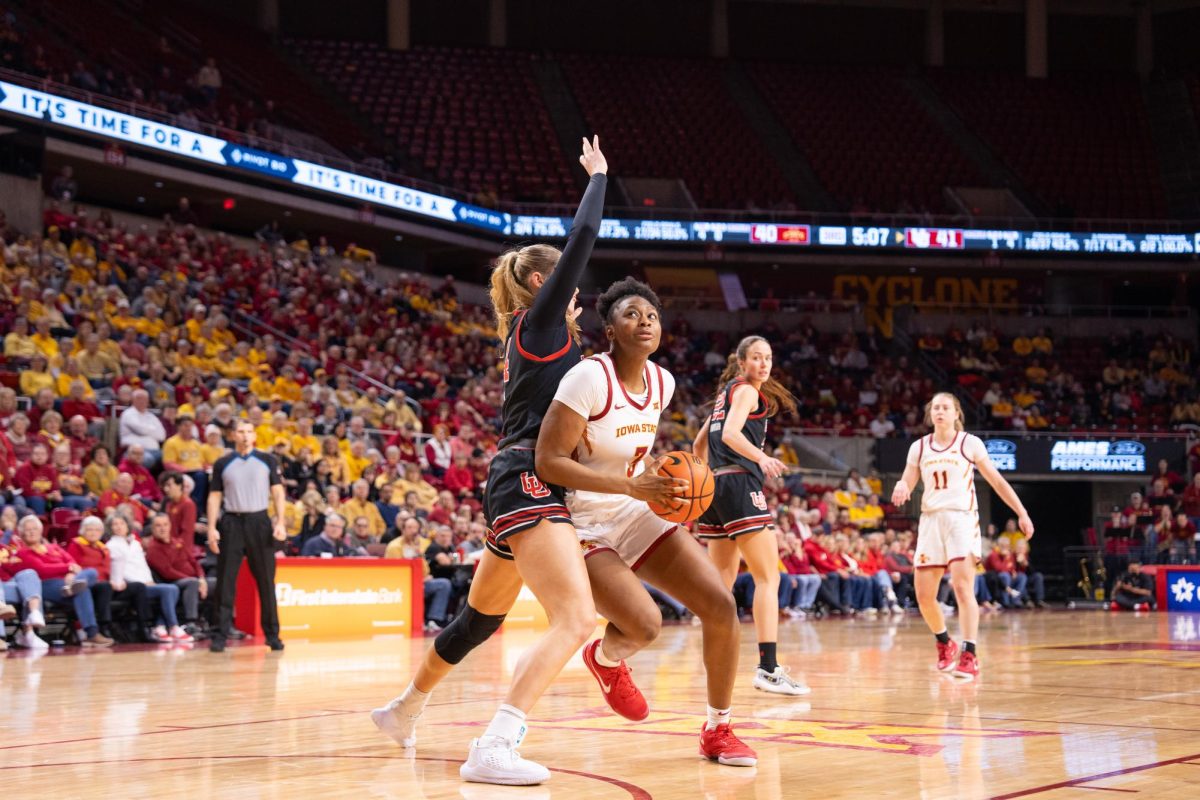Ballet National du Senegal brings traditional African dancing to C.Y. Stephens
November 4, 2002
The sound of bells were heard as women in green, red and white robes entered the stage and greeted the audience. In unison, the women told the viewers to prepare for the sharing of their African culture.
On Friday, the Ballet National du Senegal performed their production of “Kuuyamba” at C.Y. Stephens Auditorium. The show was not a typical ballet, but traditional African dancing from Senegal. The dancers portrayed the initiation process of a boy becoming a man.0
The show began with noises of chickens as a woman hunched down with a bowl and moved her arm as if feeding the animals. As she picked up a broom and made sweeping motions, a guitar-like instrument accompanied her movements.
She was joined by other female dancers who carried baskets or brooms on their heads and danced while they worked. With shouts of joy, they performed their chores as drums beat out a rhythm.
The pace picked up as more dancers entered the stage and louder drum beats were sounded. A dancer acting as village chief watched the dancers from the corner of the stage.
Adorned with leaves in their hair, many female dancers leaped onto the stage, shaking twigs and rotating their hips to the beat.
Then four men were escorted onto the stage by drummers. On their hands and knees, the two men with the wooden sticks beat the four men. More dancers arrived with bright orange grass skirts and armbands. With drums that looked like bowls, they beat out a rhythm while the women moved their feet furiously.
The display of random shouts, drumming and moving impressed Charles Hunbling of Breda.
“I’m worn out,” he said. “They have so much energy and I’m not sure how they get the choreography together. Everyone improvises, but the whole ensemble is together.”
The show continued as the four men crawled on stage with cloths over their heads. Once in their place, two men removed the cloths and they watched the dancing.
A challenge began among the dancers. One by one they would try to outdo the previous dancer by adding acrobatic movements and faster footwork.
The next scene had several drummers in a brightly colored patterned outfit. Their head pieces were large with white fringe. Each drum made a different sound and they beat them with sticks, hands and elbows.
The women returned in orange tank tops and skirts, crazily flinging their bodies and winding their arms like softball pitchers. They thrashed their heads to the beat of the drums.
Five men in striped pants and rainbow-colored shirts and bandannas entered playing their drums. With acrobatic expertise they flipped over their instruments, handspringed over other drummers, cartwheeled with their drums in their mouths and did handstands on their drums. Their dangerous aerials were performed across the entire length of the stage. One drummer in white pants set his drum on the floor and lay on top of it. As the stage lights dimmed, the spotlight captured his courageous spin on his drum.
The next scene was a man playing a guitar-like instrument with a woman singing in a very high-pitched voice. The chief of the village appeared again and enjoyed the musical interlude.
The second half of the show began with the Peulh Acrobats. The female dancers, dressed in bikini tops and yellow grass skirts, carried small grass pompoms and rotated their hips, similar to a Hawaiian hula dance.
After a few more musical interludes, musicians with drums hanging from their necks and belts beat out rhythms while two groups of dancers tried to out dance each other. With amazing flips and jumps they dazzled the audience as they clapped along to the beat. After a long display of dancing and musical talent, the audience rose and applauded. The group entered for an encore, but this time many audience members joined them on stage, copying their movements.
The unique culture and tiresome movement enthralled Tera Lawson, program assistant for the Ames Laboratory.
“It something you wouldn’t normally see in Iowa,” she said. “They are super athletic and super energetic.”






